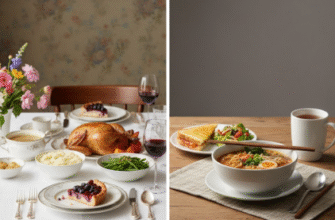Long before the fork tine pierced a morsel or the knife blade sliced through meat, humans were already using a remarkably simple tool for eating: the spoon. It’s arguably the oldest eating utensil, born from necessity and inspired by nature itself. Think about it – the cupped hand drawing water, a hollowed-out piece of wood, a conveniently shaped seashell found on the shore. These were the primordial spoons, tools designed for scooping up liquids, porridges, grains, and anything else too small or too fluid to be easily handled by fingers alone. Its enduring presence on our tables speaks volumes about its fundamental utility.
Nature’s Prototypes and Early Craftsmanship
The very first spoons weren’t ‘manufactured’ in any sense we’d recognize today. They were likely opportunistic finds. Small shells, particularly bivalves, offered a natural bowl shape. Pieces of wood, easily carved or naturally hollowed, served the same purpose. Animal horns and bones could also be shaped into rudimentary scoops. Evidence for these earliest organic spoons is scarce, simply because wood, shell, and thin bone don’t typically survive millennia buried in the earth. However, logic dictates their use long before more durable materials came into play.
As tool-making skills advanced, so did spoon construction. Paleolithic finds include carved bone and ivory implements that clearly functioned as spoons. Ancient Egyptians crafted spoons from materials like wood, ivory, flint, and slate around 1000 BCE. These weren’t always purely functional; many featured elaborate carvings, religious symbols, or hieroglyphs on their handles, indicating they held ritualistic or status significance beyond simply conveying food to the mouth. The Greeks and Romans continued this tradition, producing spoons primarily from bronze and silver. Roman designs often featured a distinctive pointed handle, possibly used for extracting snails or shellfish from their shells, demonstrating an early form of specialized utensil design.
Archaeological evidence confirms the existence of crafted spoons dating back thousands of years. Early examples made from wood, bone, and ivory have been unearthed from Paleolithic sites. The Ancient Egyptians were known to create spoons from diverse materials including slate and ivory, often adorning them with detailed carvings, signifying their importance beyond mere utility.
A Journey Through Materials
The story of the spoon is also a story of materials science, reflecting technological advancements and societal wealth.
From Humble Wood to Precious Metals
For centuries, wood remained a primary material for spoon making, especially for the common folk. It was readily available, easy to shape, and inexpensive. Different woods offered varying durability and taste characteristics. Horn and bone also continued to be used.
With the mastery of metallurgy, metals offered new possibilities. Bronze was common in Roman times, but silver quickly became the material of choice for the wealthy across Europe and beyond. Silver was not only beautiful and valuable, conferring status, but it also didn’t typically react with food or impart unpleasant tastes (unlike some baser metals). The phrase “born with a silver spoon in his mouth” directly reflects this association between silver utensils and inherited wealth, originating likely in the 18th century.
Gold spoons existed, of course, but were largely reserved for royalty, the highest nobility, or ceremonial religious use due to their extreme cost. Pewter, an alloy mostly of tin, became a widespread alternative from the Middle Ages through the 18th and 19th centuries. It was more affordable than silver but more durable and refined-looking than wood. Early pewter often contained lead, posing health risks, but later formulations were lead-free.
Eastern Traditions and Modern Innovations
In East Asia, particularly China, ceramic spoons developed alongside metal ones. Porcelain spoons, often beautifully decorated, became associated with soups and broths. Their distinct shape – typically shorter, with a deeper, flat-bottomed bowl – is perfectly suited for sipping liquids directly from the spoon.
The industrial revolution brought mass production techniques. Steel, initially prone to rust, became practical for cutlery with the invention of stainless steel in the early 20th century. Combining iron, chromium, and sometimes nickel, stainless steel offered durability, resistance to rust and corrosion, ease of cleaning, and affordability. It rapidly became, and remains, the dominant material for everyday spoons globally.
The 20th century also saw the rise of plastics, leading to cheap, disposable spoons, as well as durable melamine and silicone options, particularly popular for children’s cutlery due to their safety and bright colours. There’s also been a resurgence in the appreciation of wooden spoons, valued for their natural feel, aesthetic appeal, and kindness to non-stick cookware.
Evolution of Form: More Than Just a Scoop
While the basic concept – a bowl on a handle – has remained constant, the specific shape and size of spoons have evolved significantly, driven by changing dining habits, culinary trends, and specialised needs.
The Bowl and Handle Dance
Early spoons often had relatively shallow, sometimes leaf-shaped or fig-shaped bowls. Handles were often simple rods or slightly flattened strips. Over time, bowls generally became deeper and more rounded or oval, better suited for holding liquids like soup or sauces.
Handle design became an area for significant artistic expression, especially on metal spoons. Styles mirrored broader artistic movements:
- Medieval/Gothic: Often simple, sometimes with decorative finials like acorns or figures (e.g., Apostle spoons).
- Renaissance: More elaborate scrollwork, figural elements, classical motifs.
- Baroque/Rococo: Highly ornate, asymmetrical designs, shells, foliage.
- Neoclassical: Cleaner lines, classical motifs like columns, urns, laurel wreaths.
- Art Nouveau: Flowing, organic lines, nature-inspired forms (flowers, insects).
- Art Deco: Geometric shapes, bold lines, stylized forms.
- Mid-Century Modern/Contemporary: Streamlined, minimalist, functional designs.
The junction between the bowl and handle also evolved, sometimes featuring decorative elements like a ‘rat tail’ (a thin ridge extending from the handle down the back of the bowl, common in the 17th-18th centuries) or a ‘drop’ (a raised oval shape at the handle-bowl junction).
A Spoon for Every Purpose
As dining became more formalized, particularly from the 17th century onwards, a whole host of specialized spoons emerged, each designed for a specific food or task:
- Tablespoon: The standard large spoon for main courses, sometimes used for serving.
- Teaspoon: A small spoon originally for adding sugar to tea and stirring it, now a standard unit of measure.
- Soup Spoon: Typically features a larger, rounder bowl than a tablespoon for efficiently scooping soup. Variations exist, like the oval-bowled Gumbo spoon or the round-bowled Cream Soup Spoon.
- Dessert Spoon: Intermediate in size between a tablespoon and a teaspoon, used for desserts.
- Demitasse Spoon: A tiny spoon for stirring espresso or strong coffee served in small cups.
- Iced Tea Spoon: Features a long handle to reach the bottom of tall iced tea glasses.
- Grapefruit Spoon: Has a serrated edge or pointed tip to help separate fruit segments from the rind.
- Salt Spoon: A miniature spoon, often part of a salt cellar set, for serving salt before shakers became common.
- Serving Spoon: Larger than a tablespoon, used for dishing out food from a central platter or bowl. Slotted versions allow liquids to drain.
- Measuring Spoons: Standardized sizes (tablespoon, teaspoon, fractions thereof) for cooking and baking.
This proliferation reflects not only culinary diversity but also the etiquette and refinement associated with dining in certain historical periods.
Cultural Significance and Enduring Simplicity
Beyond its practical function, the spoon carries cultural weight. As mentioned, the silver spoon became a powerful symbol of wealth and privilege. Apostle spoons, popular in Tudor England and other parts of Europe, were sets of 13 spoons (representing Christ and the 12 Apostles) often given as christening gifts, linking the utensil to religious tradition and milestones.
In many cultures, wooden spoons are intrinsically linked to home cooking, tradition, and nourishment. The act of stirring a pot with a wooden spoon evokes feelings of comfort and care. The specific shape of the East Asian ceramic soup spoon is perfectly adapted to its culinary context, demonstrating how form follows function within cultural boundaries.
Even modern inventions like the spork – a hybrid spoon-fork – highlight the spoon’s fundamental role. While trying to combine functions, the spork often performs neither task perfectly, underscoring the effectiveness of the spoon’s dedicated, simple design for scooping.
Today, the spoon remains indispensable. From the stainless steel teaspoon stirring morning coffee to the plastic spoon with takeout soup, its presence is universal. While materials and styles have varied dramatically over millennia, the core concept has barely changed. It is a testament to intuitive design – a simple bowl on a stick, perfected thousands of years ago and still serving us faithfully at almost every meal. Its evolution has been less about radical redesign and more about refinement, material adaptation, and specialization, proving that sometimes the simplest solutions are truly the most enduring.
“`






